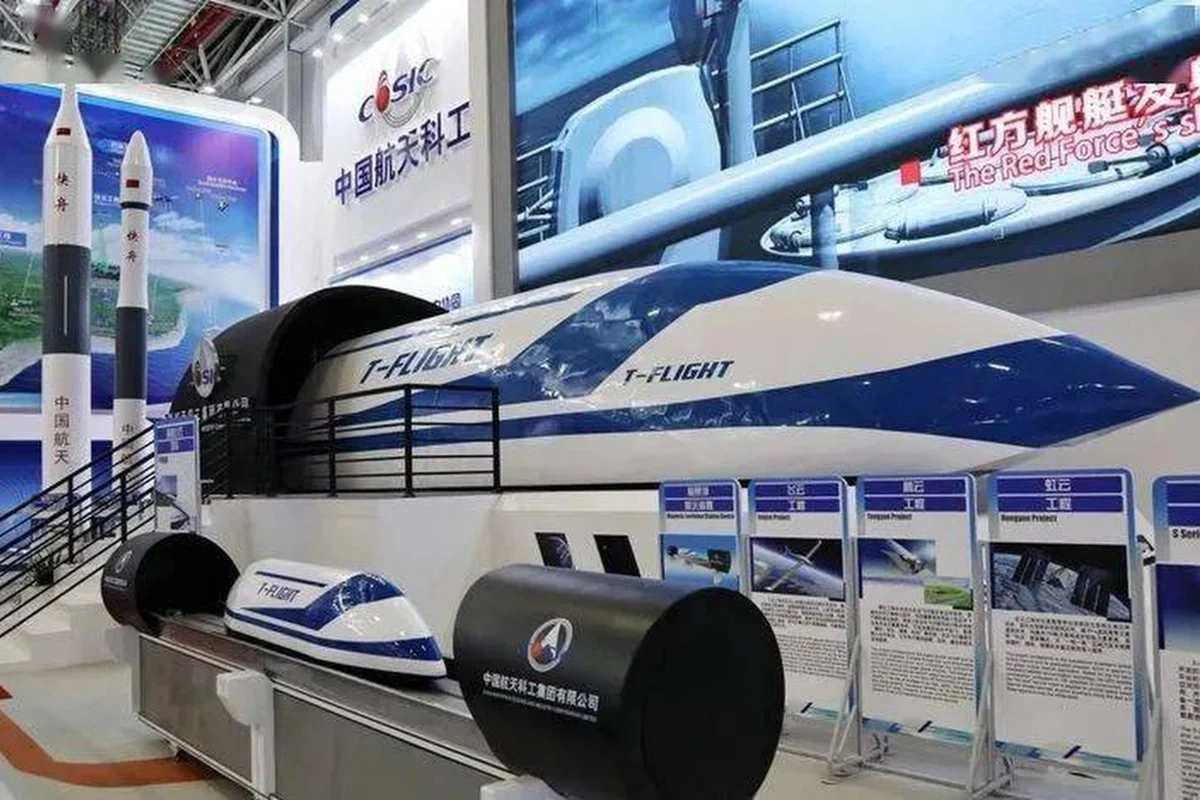Hyperloop : China on track for 1,000 km/h train. Makes Tesla's pipe dream a reality.
China has carried out another test run of its maglev hyperloop project that is designed to reach a top speed of 1,000km (621 miles) per hour.

It was the first time the integration of the train's systems has been put to the test, which was carried out in a 2km tube with a low-vacuum environment in Datong, in the central province of Shanxi.
The project developer did not disclose how fast the train went during the trial run but said the results were in line with their estimates, the official Science and Technology Daily reported on Monday.
It said the superconducting maglev vehicle achieved controlled navigation during the test, its suspension was stable and it stopped safely. Its track closely matched the theoretical trajectory, according to the report.
Key technologies were put through their paces – including the large-scale vacuum environment, superconducting navigation control technology, and the coordination of systems in a low-vacuum environment.
"This test improved the overall technical maturity of the system and laid a solid technical foundation for the next test," a representative of the project told the newspaper.
Known as the "high-speed flying train", the hyperloop project was jointly developed by the Shanxi provincial government and the state-owned China Aerospace Science and Industry Corporation.
Engineers involved in the project hope that the maglev trains will eventually be able to "fly on the ground" at speeds that rival planes. Construction of the full-scale test line in Datong – integrating aerospace and railway technology – began in Apr 2022 and was completed in Nov 2023. A few months later, the developers claimed a hyperloop test had set a new record. They did not say what speed it had reached, only that it had been faster than the previous record of 623km/h.
Official reports have suggested the ultra-high-speed train could potentially be used to link some of China's mega cities in the future. That could reduce travel time between Beijing and Shanghai – a distance of more than 1,200km that takes over four hours by bullet train – to just 90 minutes.
The idea of a transport system in a low-pressure tube first emerged more than a century ago, but it has captured the imagination of engineers and investors around the world since Elon Musk released a white paper outlining a vision for hyperloop technology in 2013.
The novel technology aims to overcome two of the biggest problems facing railway transport: friction between the wheels and the track, and air resistance to the train body.
It uses maglev – or magnetic levitation – technology to eliminate friction by using the push and pull of magnets to guide, accelerate and decelerate the train. Meanwhile, running the train in a low-vacuum tube can reduce resistance and noise.
The dream is that one day these tube-encased lines will be able to whisk passengers and freight from city to city at plane-like speeds. But this futuristic technology has a long way to go before it becomes a reality.
While there are still some teams around the world attempting to build hyperloops, Musk's attempts to realise the project collapsed when his company developing the system, Hyperloop One, was shut down at the end of 2023 after failing to win a contract to build a working hyperloop because it couldn't achieve a speed anywhere close.
Disclaimer: Community is offered by Moomoo Technologies Inc. and is for educational purposes only.
Read more
Comment
Sign in to post a comment

Lnova : oh I remember reading about that hyperloop idea back then. When it was proposed that one could get from Washington DC to NYC in like 30 minutes. It usually takes like 2-3 hours by train. I was just thinking about that recently
bullrider_21 OP Lnova : Musk's Hyperloop One shut down when it failed to come close to the speed.
Lnova bullrider_21 OP : I see… I had seen it in the news a long time ago. But it was only still being proposed. I never saw anything about it again. And I didn’t know what happened. Ty for filling me in
bullrider_21 OP Lnova : NP
Lnova bullrider_21 OP : are hyperloops able to be done? When I first read about it, I guess back in 2013, I thought the amount of time 30 minutes from D.C. to NYC was unrealistic
bullrider_21 OP Lnova : Last time it seemed unrealistic. And Musk couldn't get it done. But China may be able to achieve it in the next few years.
Lnova bullrider_21 OP : ty ♡
♡
bullrider_21 OP Lnova : yw